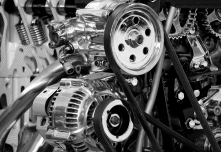
When we install burglar alarms in our homes, our home insurance premiums go down. When we take preventive steps to keep in good health, our health insurance premiums can go down. So surely new safety features in vehicles today should make vehicle ownership costs go down…right?
Maybe not.
Ironically, these safety features, which are made possible by an expensive and sophisticated array of sensors, make the vehicle more expensive to fix, according to a recent NPR Business report. Advanced driver assistance systems, or ADAS, might include proximity detection, lane keeping assistance and forward and reverse collision warnings. But should the vehicle ultimately be in an accident, it may run up thousands more in repair bills than vehicles without ADAS.
Scott Wallisch, an auto pricing director with American Family Insurance, told NPR that headlights are a good example.
“A lot of vehicles are moving towards adaptive headlights that kind of look around the corner at night, or are LED and they’re very bright,” he said.
Yes, the high-tech headlight may prevent a driver from running into something, but if the collision does happen, the effects will be felt in the wallet as well as the car (or the unfortunate deer, for that matter).
“If a headlight gets into an accident it used to be $200 to replace it,” Wallisch said. “Now, it’s $2,000 to replace that same headlight.”
Insurance companies – never known for being willing to assume any more risk than necessary – are mostly passing the higher costs on to drivers rather than absorbing it themselves. (Although some are giving breaks in premiums for extra safety features, which is why car buyers should shop around.) Vehicle sellers aren’t always upfront with customers about the increased costs of repairs they may be on the hook for. Before consumers buy vehicles with an array of safety features, they should understand the implications for repair costs.
“Advanced safety systems are much more common today,” said John Nielsen, AAA’s managing director of Automotive Engineering and Repair told NBC News. “It’s critical that drivers understand what technology their vehicle has, how it performs, and how much it could cost to repair should something happen.”












